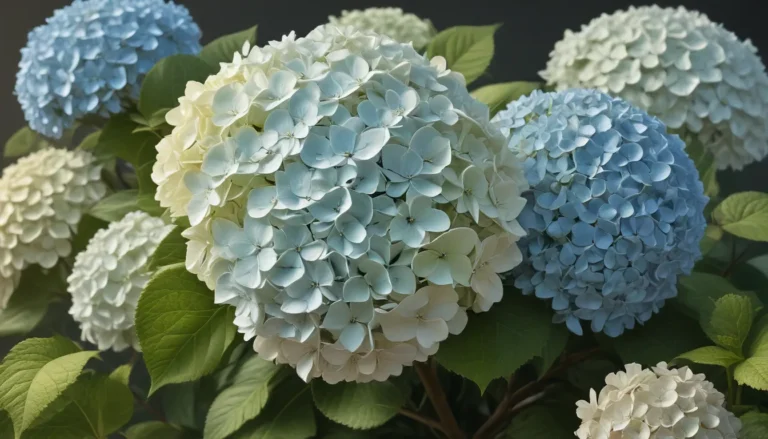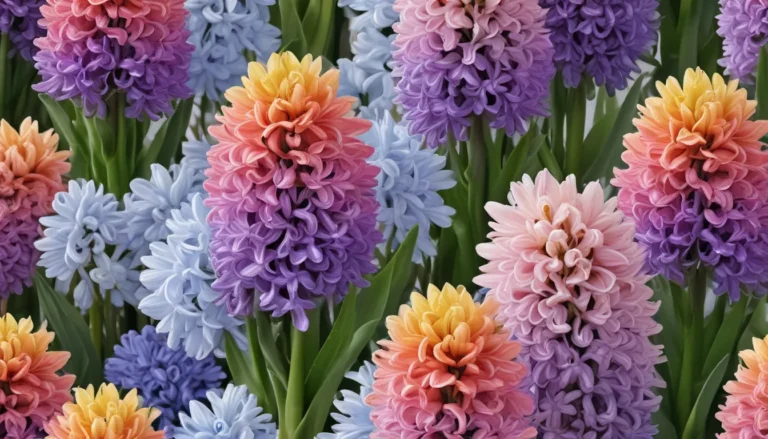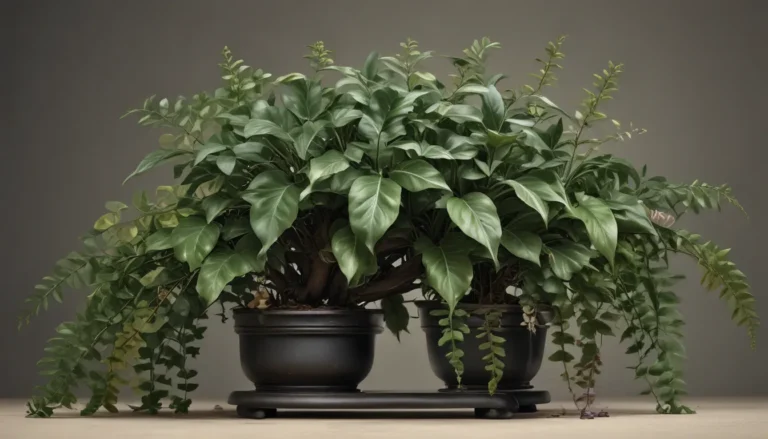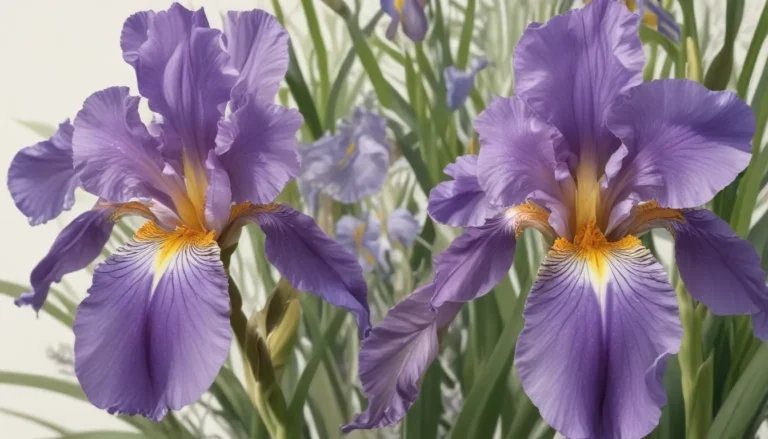The pictures we use in our articles might not show exactly what the words say. We choose these pictures to make you interested in reading more. The pictures work together with the words but don’t take their place. The words still tell you the important facts.
The Siam Tulip, also known as Curcuma alismatifolia, is a captivating flower that originates from Thailand, captivating plant enthusiasts with its stunning purple and pink blooms, and lush green foliage. This unique perennial plant not only adds beauty to gardens and floral arrangements but also possesses several fascinating characteristics that make it a beloved choice among gardeners. Let's delve into 11 intriguing facts about the Siam Tulip, from its origins to its symbolism, shedding light on its unique qualities that make it a delightful addition to any garden.
The Enchanting Siam Tulip
Native to Thailand, the Siam Tulip, also known scientifically as Curcuma alismatifolia, is a gorgeous tropical flower that stands out for its vibrant colors and distinct shape. Its striking purple and pink flowers set against lush green foliage make it a sight to behold in any garden.
A Member of the Ginger Family
Belonging to the Zingiberaceae family, which includes ginger, turmeric, and cardamom, the Siam Tulip shares its lineage with aromatic and medicinal plants known for their unique properties. Its botanical connection adds to the allure of this exotic flower.
Resemblance to Alisma Plant
The scientific name, Curcuma alismatifolia, was inspired by the petals of the Alisma plant, as the Siam Tulip's curved and pointed petals bear a striking resemblance to the leaves of the Alisma plant. This unique feature adds to the charm of this tropical flower.
Blooms During the Rainy Season
Thriving in the wet and humid conditions of the rainy season, the Siam Tulip dazzles with its vibrant blooms during this time, adding a burst of color to gardens and landscapes. Its flowers are a testament to the beauty of nature's cycles.
Remarkable Height
Standing tall at up to 1 meter in height, the Siam Tulip commands attention with its majestic stature, making it a standout feature in gardens and floral arrangements. Its impressive height adds a dynamic element to any outdoor space.
Ever-Changing Petal Colors
As the Siam Tulip blooms, its petals undergo a gradual transformation in color. Starting as vibrant shades of pink or purple, the petals age gracefully, fading into lighter hues over time. This color evolution adds a touch of intrigue to the flower's appearance.
Symbol of Love and Admiration
In Thai culture, the Siam Tulip is revered as a symbol of love and admiration, often presented as a gift to express deep emotions. Its cultural significance enhances its beauty, making it a beloved flower in Thai traditions.
Medicinal Uses
Beyond its ornamental value, the Siam Tulip is also utilized in traditional Thai medicine for its healing properties. Various parts of the plant, including the rhizomes and leaves, are incorporated into herbal remedies to treat a range of ailments, showcasing its medicinal versatility.
Chiang Mai Flower Festival
Every year, the city of Chiang Mai in Thailand hosts the Chiang Mai Flower Festival, an event that celebrates the beauty of flowers, with the Siam Tulip taking center stage in vibrant displays and parades. The festival highlights the cultural importance of this enchanting flower.
Low-Maintenance Plant
Easy to care for and adaptable to various growing conditions, the Siam Tulip is a low-maintenance plant that thrives both indoors and outdoors. Its versatile nature makes it a popular choice among gardeners of all skill levels.
Diverse Color Variations
While the classic pink and purple hues of the Siam Tulip are widely recognized, this tropical flower also comes in stunning white and vibrant yellow varieties. The array of colors adds a playful element to garden designs, offering a spectrum of choices for floral displays.
Conclusion: Embracing the Beauty of Siam Tulip
In conclusion, the Siam Tulip is a flower of exceptional beauty and significance, with a rich history and a plethora of unique traits. From its vibrant blooms to its cultural symbolism, this tropical plant continues to captivate enthusiasts and nature lovers alike. Whether you're cultivating it in your garden or admiring its allure, the Siam Tulip is sure to evoke a sense of wonder and appreciation for the natural world. Take a moment to marvel at the beauty of this enchanting flower and the stories it tells.
FAQs: Exploring Further
Q: What is the scientific name of Siam Tulip?
A: The Siam Tulip is scientifically known as Curcuma alismatifolia.
Q: Where is Siam Tulip native to?
A: Siam Tulip originates from Thailand and other parts of Southeast Asia.
Q: Can I grow Siam Tulip in my garden?
A: Yes, Siam Tulip can thrive in gardens with the right temperature and humidity levels, and it can also be grown in containers for indoor spaces.
Q: How often should I water my Siam Tulip?
A: Watering once a week, or more frequently during dry spells, is recommended to prevent overwatering, as the plant prefers well-drained soil.
Q: Does Siam Tulip have medicinal properties?
A: Yes, Siam Tulip is utilized in traditional medicine for its anti-inflammatory and antioxidant properties, but consulting a healthcare professional is advised before using it for medicinal purposes.
Q: How tall does Siam Tulip grow?
A: Siam Tulip can reach heights of 2-3 feet, depending on the variety and growing conditions.
Q: Does Siam Tulip require full sun?
A: Siam Tulip prefers partial shade to full sun, making it suitable for gardens with varying light conditions.
Q: Can I propagate Siam Tulip from seeds?
A: While Siam Tulip can be grown from seeds, it is more commonly propagated through rhizome division.
Q: Are there different varieties of Siam Tulip?
A: Yes, there are various color variations of Siam Tulip, including pink, purple, white, and yellow.
Q: Is Siam Tulip deer resistant?
A: Yes, Siam Tulip is considered deer resistant, making it a practical choice for gardens prone to deer damage.
Q: Can I use Siam Tulip as a cut flower?
A: Siam Tulip makes a delightful cut flower, lasting for several days in a vase and adding a touch of elegance to floral arrangements.
Dive into the enchanting world of Siam Tulip and explore the wonders of nature's botanical treasures. From vibrant flowers to medicinal properties, each facet of this tropical plant unfolds a story waiting to be discovered. Allow the allure of ornamental plants like Fatsia Japonica to enrich your garden with their unique foliage, or embrace tropical blooms like Anthurium Scherzerianum for their striking beauty and air-purifying qualities. Embark on a journey through the fascinating realm of botany as each plant weaves a tapestry of life on Earth, inviting you to marvel at the intricate wonders of the natural world.






